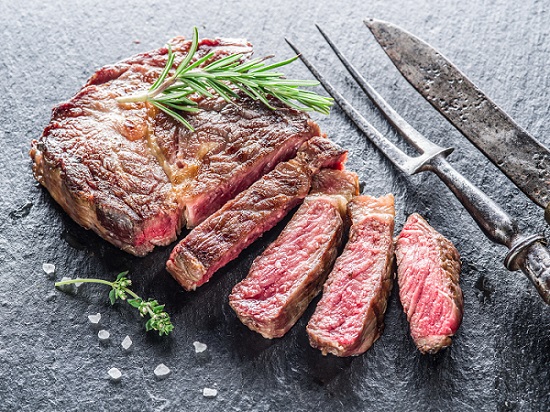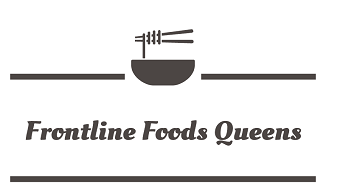Search no further! You’ve come to the right place to compare ribeye steak vs new york strip. Here, you will find all the information you need to make an informed decision about which steak is best for your culinary needs. From texture and marbling to cooking techniques and flavor, you will find everything you need to choose the perfect steak for your next meal.
Whether you’re grilling for a special occasion or just looking for a hearty meal, understanding the main difference between a ribeye steak and a New York strip can help you pick the perfect cut for your needs. Keep reading to find out more about these two popular steaks and what sets them apart.

Savor the Juicy Difference
Steak lovers know the struggle of deciding between a New York strip and a ribeye. Both cuts are delicious, but they offer different flavor profiles and cooking methods.
When it comes to the New York strip, you will enjoy a bold, beefy flavor that’s perfect for grilling. This cut is leaner and tends to be a bit more firm than a ribeye.
On the other hand, the ribeye is a true steak lover’s delight. Known for its rich marbling, this cut is incredibly tender and juicy, making it a popular choice for pan-frying or broiling.
At first glance, the two steaks may look similar, but they are quite distinct. The New York strip is a leaner cut that’s perfect for those who prefer a less-marbled steak, while the ribeye is a true indulgence for those who love the rich flavor and texture of a well-marbled cut.
When it comes to making the most of your steak-buying dollar, it is important to understand the key differences between these premium steaks. So whether you’re grilling up a New York strip or pan-frying a ribeye, you will be sure to impress your taste buds.
Facts About Ribeye Steak VS New York Strip
When it comes to comparing Ribeye vs New York Strip, there are a few key differences to keep in mind. One of the main distinctions is the marbling, or internal fat content, of the two cuts. The Ribeye boasts more marbling, giving it a tender and buttery texture. This also makes it a more forgiving cut to cook, as the higher fat content helps to keep it moist even if it is overcooked. The Ribeye can be enjoyed either boneless or bone-in.
On the other hand, the New York Strip has a thick band of fat running down one side that is not typically eaten. Its texture is closer and has a definite grain, making it a popular choice for those who prefer a bit of chew to their steak. The New York Strip also has a robust taste, thanks to its large rim of fat.
Both the Ribeye and the New York Strip are cut from the longissimus dorsi, a muscle strip that runs down a steer’s spine on the outside of the ribs. This muscle is less commonly used in cattle, making steaks cut from it more tender than those from other muscle groups. The Ribeye is cut from the front end of the longissimus dorsi and is highly marbled, while the New York Strip is cut from the rear end and has less marbling and a tighter texture.
What Is Rib Eye
Cut Type
The Rib Eye, also known as the beauty steak, Delmonico steak, cowboy cut, Spencer steak and other different names, is a cut of beef that comes from the upper rib cage of a steer, specifically the area between ribs six and twelve. This area is not heavily exercised, resulting in a cut of meat that is rich in fat marbling.
This cut of steak is made up of several different muscle groups, including the complexus, spinalis, and longissimus dorsi muscles. The latter two are the most common, and these muscles are not frequently used by the cow, which means they have a high amount of fat and very little connective tissue. This is why ribeye steaks are known for being juicy and flavorful.
When buying a ribeye steak, look for steaks that are at least one inch thick and are choice or prime grade.
If you’re looking for a Ribeye, your best bet is to check out your local supermarket, butcher shop or grocery store. You can also find it at specialized online stores.
Common Names
In the United States, it is often referred to as the beauty steak, Delmonico steak, cowboy cut, or Spencer steak. In France, it is called Entrecôte, which translates to “between the ribs,” and in Australia and New Zealand, it is known as the scotch fillet.
Flavor, Marbling and Fat
The Rib Eye is renowned for its exquisite marbling and succulent flavor. When cooked to perfection, this steak will simply melt in your mouth for an unforgettable culinary experience. The marbling also helps keep the steak moist, even if it is overcooked. Ribeyes are typically fairly thick, with a minimum thickness of one inch, and can weigh as much as 16 ounces. You can get either a classic bone-in or boneless ribeye. Many believe that the bone adds flavor to the steak, but it does make cutting and eating more challenging.
Cooking Method
To cook a ribeye, two-zone grilling or the reverse sear method are recommended.
Two-Zone Grilling
Two-zone grilling involves grilling the steak over a two-zone fire, with one zone hot and the other medium. The steak is first seared on the hot side to brown the outside and then moved to the medium side to finish cooking.
Reverse Sear
The reverse sear method involves slow roasting the steak in an oven and then searing it on a hot pan or grill to finish it off. In either case, a meat thermometer should be used to check for doneness. Because of the high fat content of the ribeye, it is important to keep an eye on the steak to prevent flare-ups.
What Is New York Strip
Cut Type
The New York Strip is a cut of beef that comes from the longissimus dorsi muscle of the cow, located in the short loin primal area just under the animal’s backbone.
When looking to purchase a NY Strip steak, it is best to buy the highest grade you can afford. The steak should have an even width from top to bottom, without a wavy shape or one end that is more narrow, as these are from the sirloin end and won’t taste as good.
When it comes to a New York Strip, your best option is to visit local butcher shops, grocery stores or specialized online stores that offers top-quality meats.
Common Names
Often referred to as the Ambassador Steak, Country Club Steak, Kansas City Strip, Shell Steak, Top Loin Steak, Kansas City Steak or Hotel Cut Steak, it is also half of a Porterhouse steak. In Australia and New Zealand, it is sold as a porterhouse or sirloin steak.
Flavor, Marbling and Fat
When it comes to the New York Strip, size, flavor and texture are all key factors to consider. This cut of beef comes from the same underused muscle group as the Ribeye, which means it is both tender and flavorful. You will notice a thick pad of fat down one side, giving it a characteristic chew and rich taste.
The New York Strip steak is long and thin, with a rectangular shape. It is typically around 8 to 12 ounces, and it is not a particularly fatty cut of beef. To keep it from drying out during cooking, it is usually cut around 1 to 1 1/2 inches thick. While it may not have the same level of fat as the ribeye, the New York Strip can still be beautifully marbled, adding to its rich, beefy flavor.
Despite its lower fat content, the New York Strip is a smooth, tender steak, making it a popular choice for those who want a leaner steak without sacrificing flavor. Whether you’re grilling, pan-frying or broiling, this versatile cut is sure to impress.
Cooking Method
To cook a New York Strip steak, grilling, pan-frying, or broiling on a wire rack are the most popular methods.
Grilling
Grilling the steak hot and fast is the best way to get a nice char on the outside while keeping the inside rare or medium-rare, but be sure to use a thermometer to bring it up to the perfect temperature and avoid overcooking.
Pan-Frying
Pan-frying is also an option, but be sure to get the pan smoking hot, use a thermometer to bring the steak to 5 degrees F away from the perfect temperature, and then rest it for a minute on a wire rack over a tray. To finish the steak, collect the juices and pour them back over the steak, a technique known as the “Fat-Flash.”
Pro-Tips for Grilling to Perfection
Grilling the perfect steak is an art form, and with the right tips and techniques, you can create a mouthwatering masterpiece every time. Whether you’re grilling a New York Strip or a Ribeye, here are a few tips to help you achieve steak perfection:
– Invest in a meat thermometer. This handy tool is the most accurate way to gauge the internal temperature of your steak and ensure it is cooked to your liking.
– Season your steak simply and sparingly. Salt, pepper, and a few herbs or spices can elevate the natural flavor of the meat without overpowering it.
– Use tongs or a spatula to flip your steak, rather than piercing it with a fork. This will help keep all of those delicious juices inside, making your steak more flavorful and tender.
– Let your steak rest for at least five minutes before cutting into it. This allows the juices to redistribute, making your steak even more succulent and juicy.
By following these tips, you will be well on your way to grilling the perfect steak every time.
Which Steak Is the Healthier Option
When it comes to making a healthier choice, the New York Strip steak may be the way to go. While both the New York Strip and the Ribeye offer delicious flavor and tenderness, the New York Strip has a lower fat content, making it a leaner option for those who are conscious about their dietary choices.
It is worth noting that both types of steak are high in protein, which is a crucial nutrient for your overall health. Ultimately, the best steak for you will depend on your personal preferences and dietary goals.
Storage of Leftover Steak
Storing leftover steak can be a great way to enjoy a delicious meal again later on. Here are a few tips for keeping your New York strip or ribeye fresh and delicious:
First, make sure to properly store your steak in an airtight container in the refrigerator. This will help preserve the flavor and texture of the meat.
If you plan to reheat the steak, you can do so in a variety of ways. For example, you can slice it up and toss it in a skillet with some eggs or vegetables for a quick and easy stir-fry. Or, you can reheat the whole steak on a grill, in the oven, or even in the microwave.
Another option is to freeze your leftover steak. Just make sure to wrap it tightly in plastic wrap or foil to protect it from freezer burn. It will keep for up to 3 months in the freezer.
When reheating frozen steak, allow it to defrost in the refrigerator for 24 hours before reheating it.
Frequently Asked Questions About Ribeye Steak Vs New York Strip
What is the hardest steak to cook?
Different cuts of steak have varying levels of tenderness, with some being more difficult to cook than others. Some of the toughest cuts include the shank, round, flank, plate, chuck, and brisket – areas that have to work hard to support the cow’s weight.
Is New York strip steak tender?
New York strip steaks have a fine-grained texture and medium fat content, making them relatively tender with a bit of chew. They have good marbling and a robust beefy flavor, and are easy to trim and cook.
Is New York strip steak chewy?
New York strip steaks come from the short loin of the cattle, which is located behind the rib section and in front of the thigh section. This steak has a chewy texture and robust flavor, owing to the high muscle content in this area.
What is a good substitute for ribeye steak?
If you’re looking for a substitute for rib eye steak, a New York strip steak is a good choice as it has a similar level of marbling. Other options include Porterhouse or T-bone steak, which also contain the tenderloin.
How do you tenderize a New York strip?
One way to tenderize a New York strip is to use a meat mallet or kitchen mallet to pound the steak prior to cooking. This helps to soften and tenderize the meat. If you don’t have a meat mallet, you can also use a heavy kitchen tool like a skillet, saucepan, or rolling pin.
What is America’s favorite cut of steak?
The Filet Mignon is often considered America’s favorite cut of steak due to its tenderness and mild flavor. It is the most approachable of all steak cuts, but also the most expensive.
Do you grill a steak fast or slow?
When it comes to grilling a steak, you want to use hot and fast cooking methods to get a nice brown, caramelized coating or sear. This can only be achieved by using a very hot, direct heat source.
Does New York strip need marinade?
Most expensive steaks, like rib steak, strip steak, and filet mignon, don’t need marinade and end up juicy and tender without it. So, you will usually want to skip the marinade unless you buy budget-friendly cuts.
Wrap Up
When it comes to choosing between a New York Strip and a Ribeye, it is hard to go wrong. Both are delicious cuts of beef with their own unique characteristics. The Ribeye is known for its buttery texture and rich, rendered fat, while the New York Strip offers a leaner option with a deep beefy flavor and a satisfying chew.
Ultimately, the choice between these two steaks comes down to personal preference. Whether you prefer a rich and decadent Ribeye or a lean and flavorful New York Strip, you’re sure to enjoy either one. And if you’re feeling adventurous, why not try both and compare for yourself?


